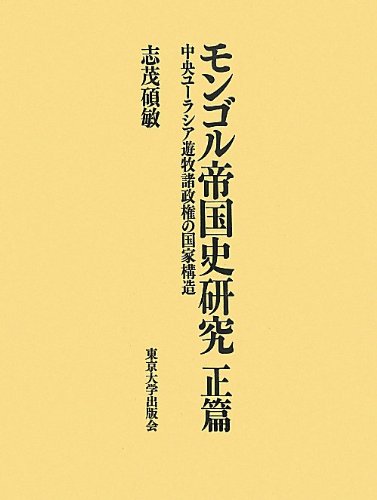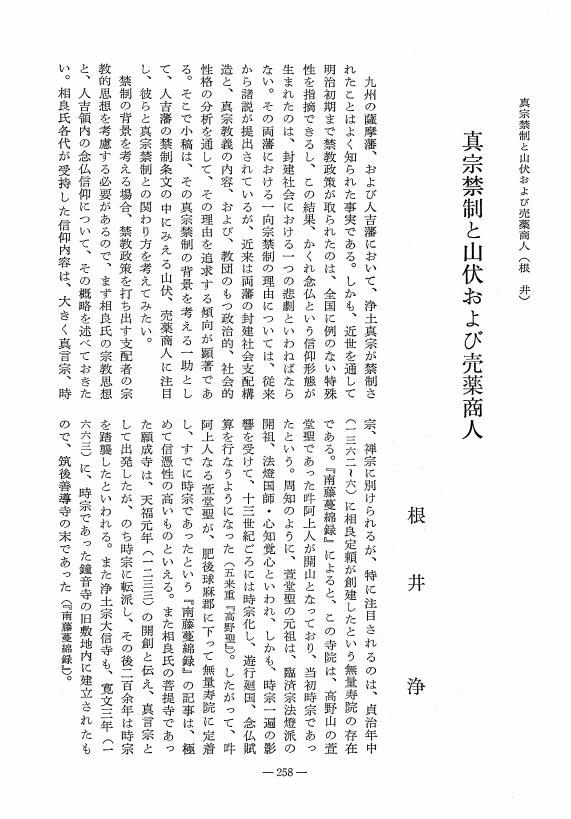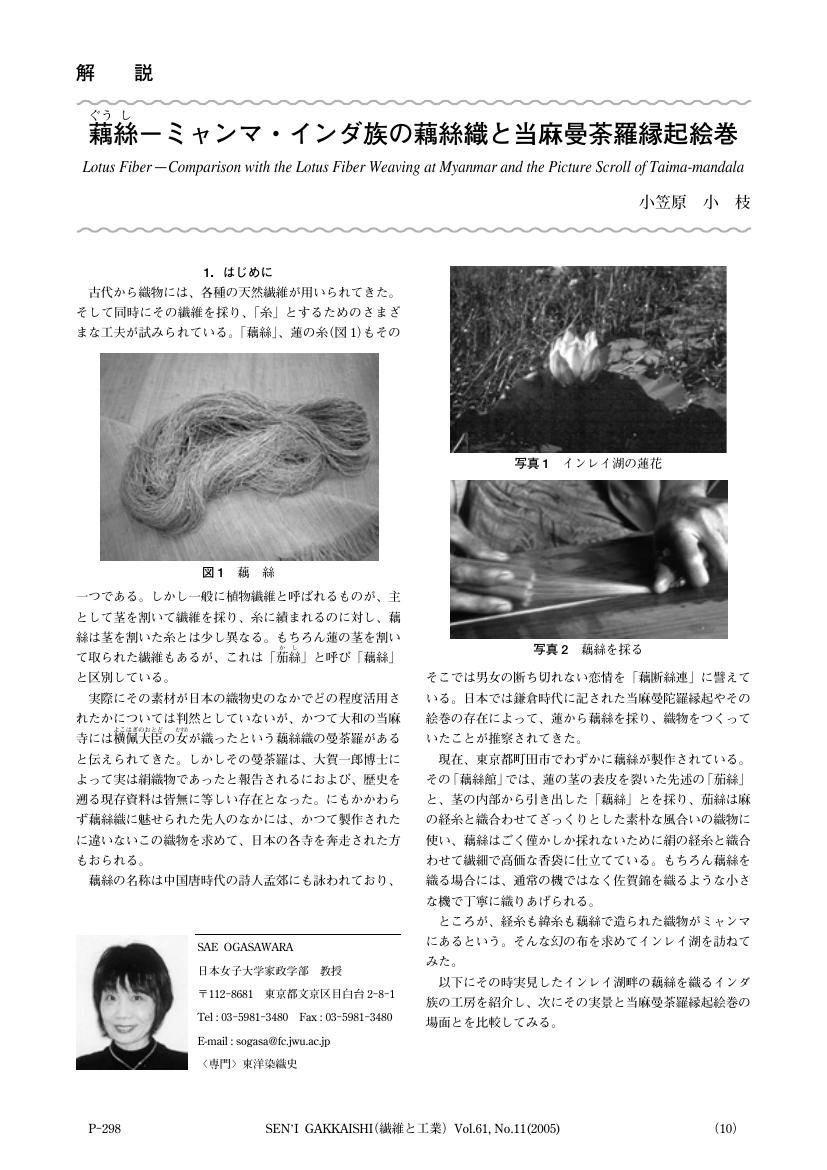3 0 0 0 OA 特定企業の戦略的特許出願網の事例分析―S社の自転車部品市場における知的財産戦略―
- 著者
- 三沢 岳志 今井 雅子 井本 美子 前田 耕一 矢部 悟
- 出版者
- 一般社団法人 情報科学技術協会
- 雑誌
- 情報の科学と技術 (ISSN:09133801)
- 巻号頁・発行日
- vol.71, no.2, pp.74-79, 2021-02-01 (Released:2021-02-01)
本研究は自転車部品業界で世界トップ企業のS社を選び,その知的財産戦略を明らかにすることを目的にした。S社は自転車部品業界で世界的に圧倒的なシェアを持つことと,自転車部品の組み合わせであるコンポーネントは独自のものを提供しながら,その外部インターフェースは公開されていることから「自転車界のインテル」と言われている。しかし調査するとビジネスモデルも知財戦略もインテル社とは異なる。また,自転車業界がEバイクに急速に移行する中,S社は後発でありながら,Eバイクのコンポーネントでも一定のシェアを確保している。そこでS社の自転車部品におけるトップシェア獲得と,Eバイク市場への参入における知財戦略の研究を行った。
3 0 0 0 モンゴル帝国史研究正篇 : 中央ユーラシア遊牧諸政権の国家構造
3 0 0 0 OA アンケートで性別をどのように聞くべきか
- 著者
- 前之園 和喜
- 出版者
- 公益財団法人 日本世論調査協会
- 雑誌
- 日本世論調査協会報「よろん」 (ISSN:21894531)
- 巻号頁・発行日
- vol.129, pp.11-20, 2022-03-31 (Released:2023-03-31)
3 0 0 0 OA ペレットストーブのライフサイクル環境影響評価
- 著者
- 石坂 和明 村山 克己 伊坪 徳宏
- 出版者
- 日本LCA学会
- 雑誌
- 日本LCA学会誌 (ISSN:18802761)
- 巻号頁・発行日
- vol.3, no.1, pp.45-51, 2007 (Released:2008-05-22)
- 参考文献数
- 4
- 被引用文献数
- 3 2
In order to evaluate the environmental impact of Pellet stove, we executed life cycle impact assessment using LIME. Items of environmental impact assessment were 4 safeguard subjects of Human health, Social asset, Primary production and Biodiversity, and Weighting of 4 safeguard subjects. A comparison product took up Oil fan heater. As a result of the analysis, the characteristic of environmental impact of Pellet stove was clarified. In the comparison with Oil fan heater, there was relation of trade-off by item of safeguard subject. In the evaluation by weighting, the environmental impact of Pellet stove was smaller than that of Oil fan heater. Environmental domination of Pellet stove was verified.
- 著者
- 山本 一敏 後藤 洋三 柿本 竜治 山本 幸
- 出版者
- 公益社団法人 土木学会
- 雑誌
- 土木学会論文集A1(構造・地震工学) (ISSN:21854653)
- 巻号頁・発行日
- vol.77, no.4, pp.I_589-I_602, 2021 (Released:2021-07-22)
- 参考文献数
- 13
- 被引用文献数
- 1 1
2016年熊本地震の被災地自治体の技術職員に実施したインタビューとアンケート結果から,地震発生時の応急復旧と地元建設業とコンサルタントへの支援要請の実態を調査した.技術職員の不足や技術と経験が不十分である等の理由から2/3程度の施設で被災規模の把握に2週間以上を要していた.BCPや震災対策マニュアルの作成と訓練,管理施設の資料の整備,外部への支援要請などが不十分だった自治体もあり,限られた技術職員で社会インフラ施設の機能を迅速に回復するためには,これらの改善が必要である.
3 0 0 0 OA 美と悲哀の神経美学
- 著者
- 石津 智大
- 出版者
- 日本神経回路学会
- 雑誌
- 日本神経回路学会誌 (ISSN:1340766X)
- 巻号頁・発行日
- vol.29, no.3, pp.119-134, 2022-09-05 (Released:2022-10-05)
- 参考文献数
- 129
神経美学(neuroaesthetics)とは,様々な美学的体験(美的範疇)や芸術的活動に関係する脳機能と認知の仕組みを研究する認知神経科学の一分野である.誕生から20年弱の比較的新しい分野だが,美学的体験や芸術についての認知神経科学・心理学的アプローチは各国の研究機関でも重視されている.現在,欧州と北米を中心にロンドン大学ユニバーシティ校,ウィーン大学,マックスプランク研究所,ニューヨーク大学,ペンシルベニア大学,UCバークレーなど主要大学・研究機関において研究講座が開設されている.ロンドン大学ゴールドスミスカレッジ心理学部では,正式に当分野を修めることのできる修士課程コースも開講され,今後さらなる展開が期待される.知覚・認知と美学的体験との関係を科学の対象として研究した最初の試みは,19世紀末頃のグスタフ・フェヒナーによる実験美学に端を発する.複雑な感性的体験を一つの変数で説明し,共通の要素を見つけることで,多様な感性的体験を定式化しようと試みたのだ.しかしフェヒナーにとってより重要な目的は,刺激への反応の背後に想定される神経活動との関係性を説明することであり,それは心理物理学と実験美学のひとつの目標でもあった.非侵襲の脳機能画像法と認知神経科学の発展により,現在その実証性の理念は神経美学に引き継がれたといえる.本稿では,前半で神経美学,特に視覚における神経美学研究を概観する.続いて後半では,現在注目されている負の感情価を伴う美的感性について仮説を含めて議論する.心理学的・脳機能的な観点から,負の感情価の伴う美的体験について仮説と今後の検討課題を提示することを目的としている.なお本稿では,主に視覚・視覚芸術に関する神経美学を扱う.音楽に関する認知神経科学的検討は,本特集号の大黒による論考を参照されたい.
3 0 0 0 OA 嗜好品がもたらす効果における古典的条件づけの役割
- 著者
- 福田 実奈
- 出版者
- 日本基礎心理学会
- 雑誌
- 基礎心理学研究 (ISSN:02877651)
- 巻号頁・発行日
- vol.38, no.1, pp.143-148, 2019-09-30 (Released:2019-12-10)
- 参考文献数
- 31
Some studies have found that a neutral stimulus can become associated with caffeine or alcohol through classical conditioning. Further, several studies have shown that the taste, smell, and sight of caffeine or alcohol (e.g., decaffeinated coffee, non-alcoholic drinks) can acquire the properties of a conditioned stimulus. In human classical conditioning, a conditioning procedure (i.e., the pairing of a conditioned stimulus and unconditioned stimulus) and other factors (e.g., verbal information) are the sources of learning. In the present context, verbal information refers to whether participants are told that their drink is decaffeinated or non-alcoholic. The taste, smell, and sight of decaffeinated coffee (caffeine cue) or non-alcoholic beer (alcohol cue) can induce a conditioned response, even when participants know that the drink is decaffeinated or non-alcoholic. Therefore, in everyday life, decaffeinated coffee and non-alcoholic beer may change performance in coffee or alcohol drinkers.
3 0 0 0 OA ストレス評価としての瞳孔機能
- 著者
- 原 直人
- 出版者
- 日本眼光学学会
- 雑誌
- 視覚の科学 (ISSN:09168273)
- 巻号頁・発行日
- vol.33, no.2, pp.47-51, 2012 (Released:2019-11-22)
- 参考文献数
- 28
- 被引用文献数
- 3
ストレスに対する生体の評価あるいは視覚疲労の生理的評価のために瞳孔反応を用いた方法が研究されてきた。瞳孔径は,精神活動であるストレス,覚醒,注意,あるいは眠気などに相関して増大する。したがって瞳孔反応は,扁桃体あるいは前頭葉機能との相互関係により調節されており,情動発現や認知過程に関する単純な反射ではなく,脳活動全般の指標であることが示唆されている。自律神経系反応としての瞳孔径の変化が,ストレスと強い相関関係にあるバイオマーカーとして用いられている。また瞳孔振動・ゆらぎを指標として,ストレスや睡眠との関係を研究した報告が数多くある。例えば,全身疲労で疲弊した状態では,瞳孔縮瞳に伴い大きな瞳孔のゆらぎが出現するが,それが他覚的な眠気の指標とされている。一方,疲労とは相反する状態である音楽を聴きながらのリラックス状態でも同様な縮瞳とゆらぎの出現が観察できる。いまだ情動発現における身体反応と瞳孔反応の研究は十分ではない。今後,瞳孔反応の非侵襲的な測定方法によりますます盛んになることが望まれる。
3 0 0 0 警視庁史
- 著者
- 警視庁史編さん委員会 編
- 出版者
- 警視庁史編さん委員会
- 巻号頁・発行日
- vol.[第2] (大正編), 1960
3 0 0 0 OA 真宗禁制と山伏および売薬商人
- 著者
- 根井 浄
- 出版者
- Japanese Association of Indian and Buddhist Studies
- 雑誌
- 印度學佛教學研究 (ISSN:00194344)
- 巻号頁・発行日
- vol.30, no.1, pp.258-261, 1981-12-31 (Released:2010-03-09)
3 0 0 0 OA イップスを経験したスポーツ選手の心理的成長 ―野球選手を対象として―
- 著者
- 松田 晃二郎 須﨑 康臣 向 晃佑 杉山 佳生
- 出版者
- 日本スポーツ心理学会
- 雑誌
- スポーツ心理学研究 (ISSN:03887014)
- 巻号頁・発行日
- vol.45, no.2, pp.73-87, 2018-09-30 (Released:2018-10-04)
- 参考文献数
- 53
- 被引用文献数
- 2 3
The present study aimed to explore the psychological growth achieved by athletes during coping with the yips. We interviewed six university baseball players (mean age=21.0 years, SD=1.15 years) who experienced the yips using the episode interview method and then gathered narrative data related to the experience of the yips or the psychological growth accompanying the same. As a result of analysis of the data, it was roughly divided into two types of narratives: “narratives of negative psychological changes accompanying the experience of the yips” and “narratives of psychological growth accompanying the experience of the yips.” Further analysis of the latter yielded the following five category groups on psychological growth: “positive changes in consciousness of competition,” “changes in self-recognition,” “mental margin,” “changes in the views of a way of others,” and “deepening of understanding of competition.” These results suggest that the experience of the yips leads to negative as well as positive psychological changes in the athlete.
3 0 0 0 OA 薬物の反復投与による行動効果の修飾 ―逆耐性現象を中心に―
- 著者
- 田所 作太郎 栗原 久
- 出版者
- 公益社団法人 日本薬理学会
- 雑誌
- 日本薬理学雑誌 (ISSN:00155691)
- 巻号頁・発行日
- vol.95, no.5, pp.229-238, 1990 (Released:2007-02-20)
- 参考文献数
- 52
- 被引用文献数
- 24 25
It has been well-known that a chronic abuse of amphetamines induces schizophrenia-like psychotic symptoms, namely amphetamine psychosis. When amphetamines are repeatedly administered to rodents, a reverse tolerance (behavioral sensitization) to the ambulationincreasing and/or stereotypy-producing effect is observed. The process of the reverse tolerance is affected by various factors. A clear reverse tolerance is produced when optimal doses of the drug (2 mg/kg, s.c. for mice, and 0.5 ?? 1 mg/kg, s.c., for rats) is administered at intervals of longer than 1 day rather than a shorter interval. Furthermore, the animal has to be put into a freely mobile situation during the presence of the acute drug effect. A cross reverse tolerance is observed between certain types of drugs that show an ambulation-increasing effect, although the potencies are different among the drugs. A reverse tolerance to the stereotypy (in particular sniffing and head-bobbing)producing effect is also observed when comparatively higher doses of methamphetamine are repeatedly administered. The process is qualitatively identical with the reverse tolerance to the ambulation-increasing effect produced by the repeated administration of comparatively smaller doses. The reverse-tolerance, once established, to both ambulation-increasing and stereotypy-producing effects is almost irreversible even with various treatments such as repeated post-treatment with antipsychotics. The characteristics of reverse tolerance to methamphetamine in animals might be closely correlated to the amphetamine psychosis in humans. It is also necessary to search for a method that effectively reduces the established reverse tolerance to amphetamines.
- 著者
- 新本 史斉
- 出版者
- 明治大学文芸研究会
- 雑誌
- 文芸研究 (ISSN:03895882)
- 巻号頁・発行日
- vol.149, pp.45-66, 2023-02-28
3 0 0 0 OA 藕絲-ミャンマ・インダ族の藕絲織と当麻曼荼羅縁起絵巻
- 著者
- 加藤 一佳
- 出版者
- 明星大学教育学研究室
- 雑誌
- 明星大学教育学研究紀要 = Bulletin of science of education, Meisei University (ISSN:1346664X)
- 巻号頁・発行日
- no.25, pp.18-40, 2010-03-20
3 0 0 0 IR 申采浩史学と崔南善史学
- 著者
- 池 明観
- 出版者
- 東京女子大学
- 雑誌
- 東京女子大学附属比較文化研究所紀要 (ISSN:05638186)
- 巻号頁・発行日
- no.48, pp.p135-160, 1987
Historiography in Korea was very much affected by Japanese colonial rule, 1905 to 1945. Some historians were inclined to describe the contemporary history of Korea using a kind of eye-witness report style. Others focussed on finding a glorious period of national history to maintain national pride. These historical writings could be regarded as nationalist histories. Shin Chai-ho and Choi Nam-sun devoted themselves mainly to Korean ancient history, tracing back to the mythological age of Dangun. Shin and Choi had in common the purpose of resisting the historiography of Japanese scholars writing about Korea who claimed that Korea had been under the sovereignty of China without having its own independence, and even that for some time in ancient times Korea had been ruled by Japan as well. Shin described Dangun as ancient kings who had also been priests. He said that the dynasty lasted about 1500 years and was followed by the Puyo dynasty, which ruled for another 1000 years. Geographically, these dynasties covered the north-eastern part of China and Korea. They kept their people in continuous struggle with the Chinese people. Shin declares that most of these historical facts were lost because the oldest history, the "Samkuk Sagi" was written in the 12th century by Kim Bu-shik, a Confucian and loyal to Chinese culture. Thus he eliminated and distorted many historical facts of ancient Korean times, according to Confucian principles. Shin attempted to document historical facts of ancient times, so as to maintain national pride, using fragmented records he found mostly in Chinese historical materials. In doing so, Shin interpreted Korean history in political terms. He hoped to strengthen the patriotism of the Korean people so that they might win their national independence. He was in exile from 1910 until 1936, when he died in a Japanese prison in Manchuria. On the other hand, Choi, who was ten years younger than Shin, inherited Shin's attitude towards Korean history, but he gradually tended to interpret Korean history in cultural terms. He remained in Korea, which was under the strict control of Japanese colonial rule, and therefore could not interpret Korean history in political terms. He hoped to search for national identity in Korean culture. This resulted in his claim that both Korean culture and Japanese culture shared the same roots in ancient times in Shinto, the religion of east Asia. Choi's original purpose was to maintain the cultural superiority of the Korean people over the Japanese, yet he compromised this stand under Japanese rule. He was made to stand trial in a Korean court after the war ended, which indicted him for his cooperation with the Japanese before 1945. We may say that the historiography of Shin and Choi demonstrates two ways of living and thinking during the dark times of modern Korea under Japanese rule. One view of history was written by a historian who was in exile-a political view that was hoped to be useful for the independence movement. The other was used by a historian who lived inside Korea and hoped to survive first and resist as much as possible within the parameters of a situation controlled by colonizers. It is unfortunate that both of them were forced to frame their historical thought largely in opposition to the interpretation of Korean history done by Japanese scholars, who based their interpretation on their discriminatory attitudes towards Korean people and on Japanese political motives. At the same time, it is a pity that under this situation, both of them overlooked many important historical truths which may be said to have been left for the next generation. It is noteworthy that at the present time in Korea, while engaging in the democratic movement, historians have adopted the nationalist history of Shin Chai-ho, hoping their historiography may cast some light on the present political dilemma.
3 0 0 0 OA 第5学年の正式な割合指導前における児童の倍・割合の捉え方
- 著者
- 山田 篤史 木下 匠
- 出版者
- 愛知教育大学数学教育講座
- 雑誌
- イプシロン (ISSN:0289145X)
- 巻号頁・発行日
- vol.63, pp.11-22, 2022-03-15




